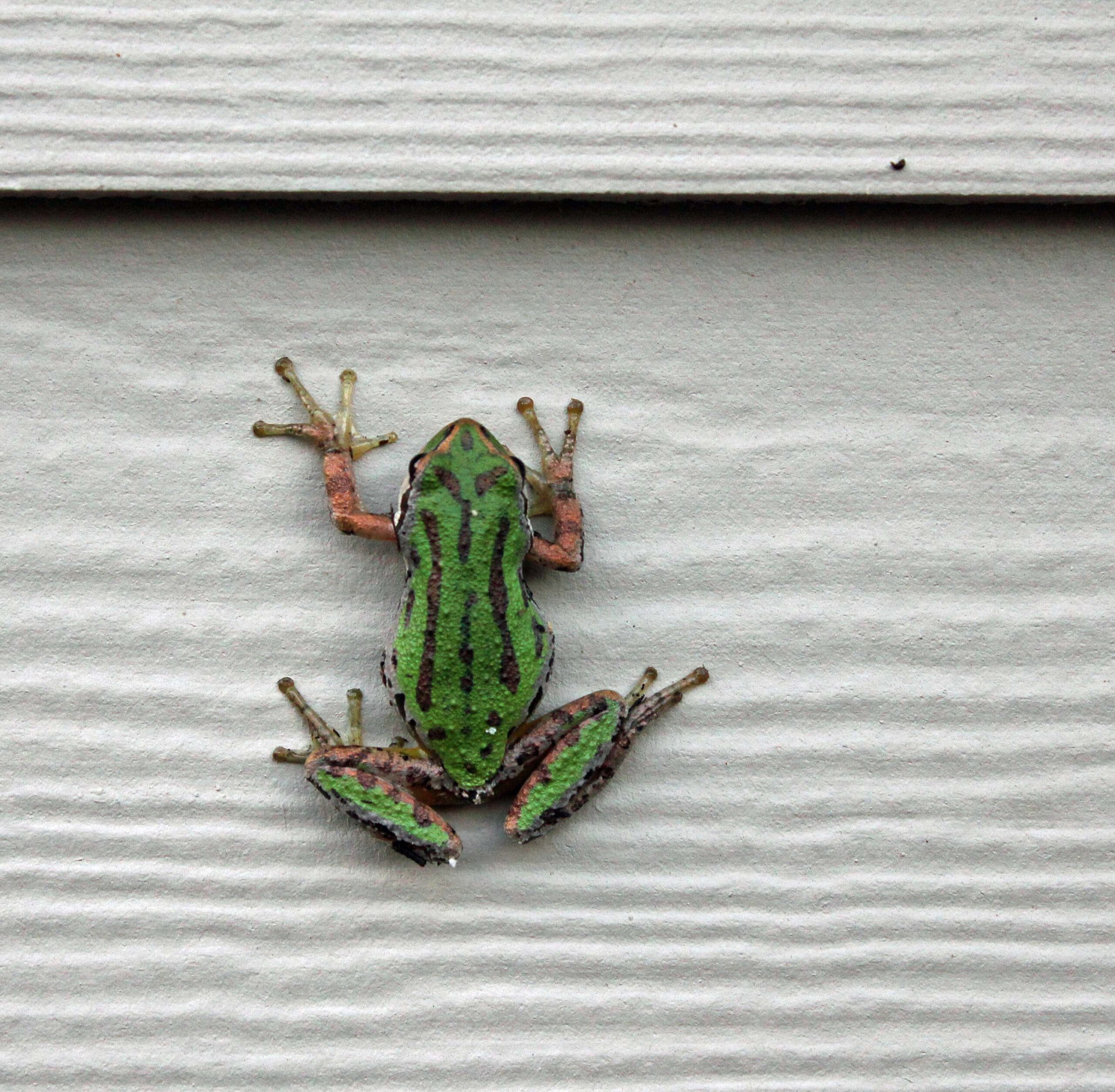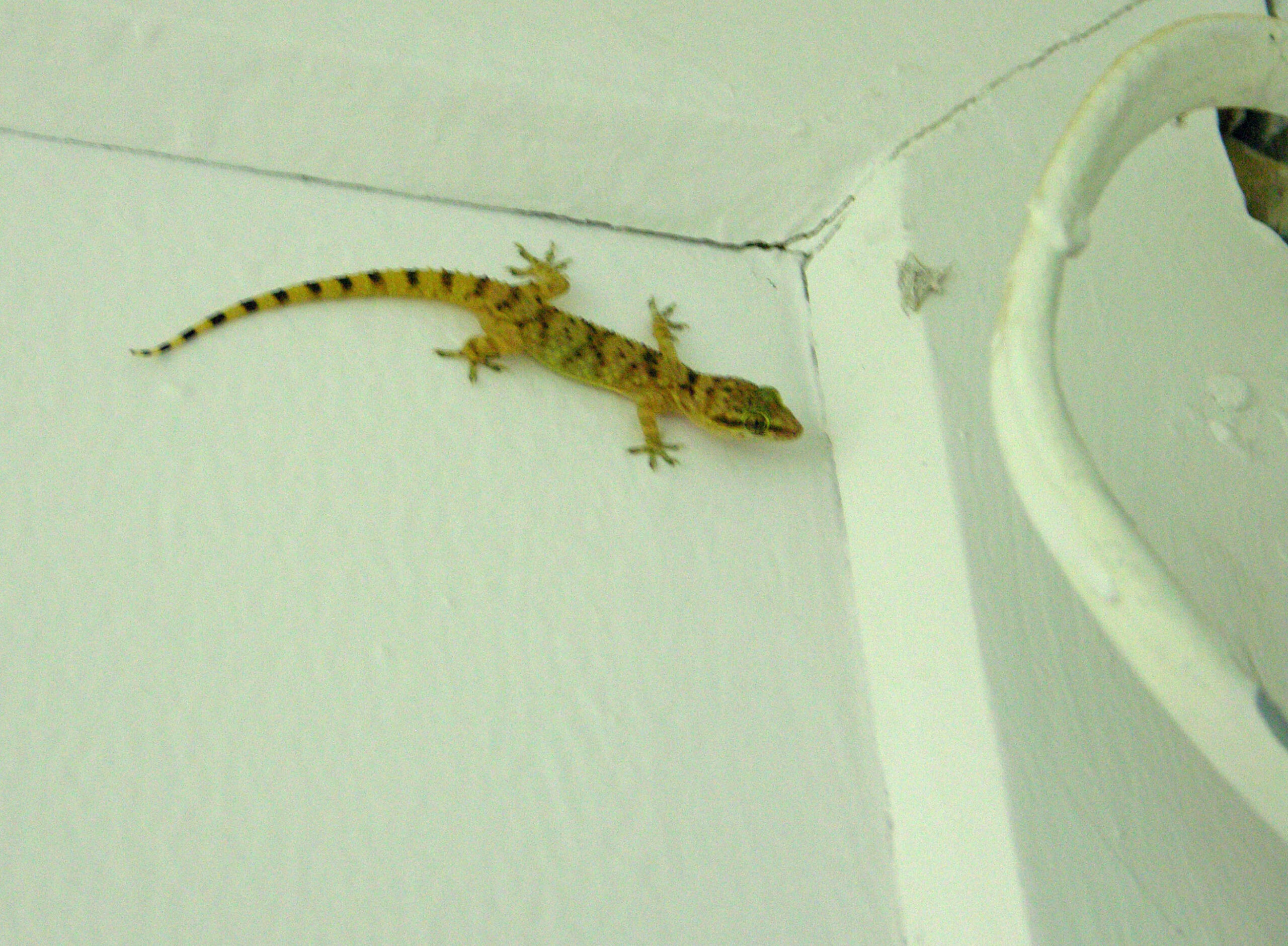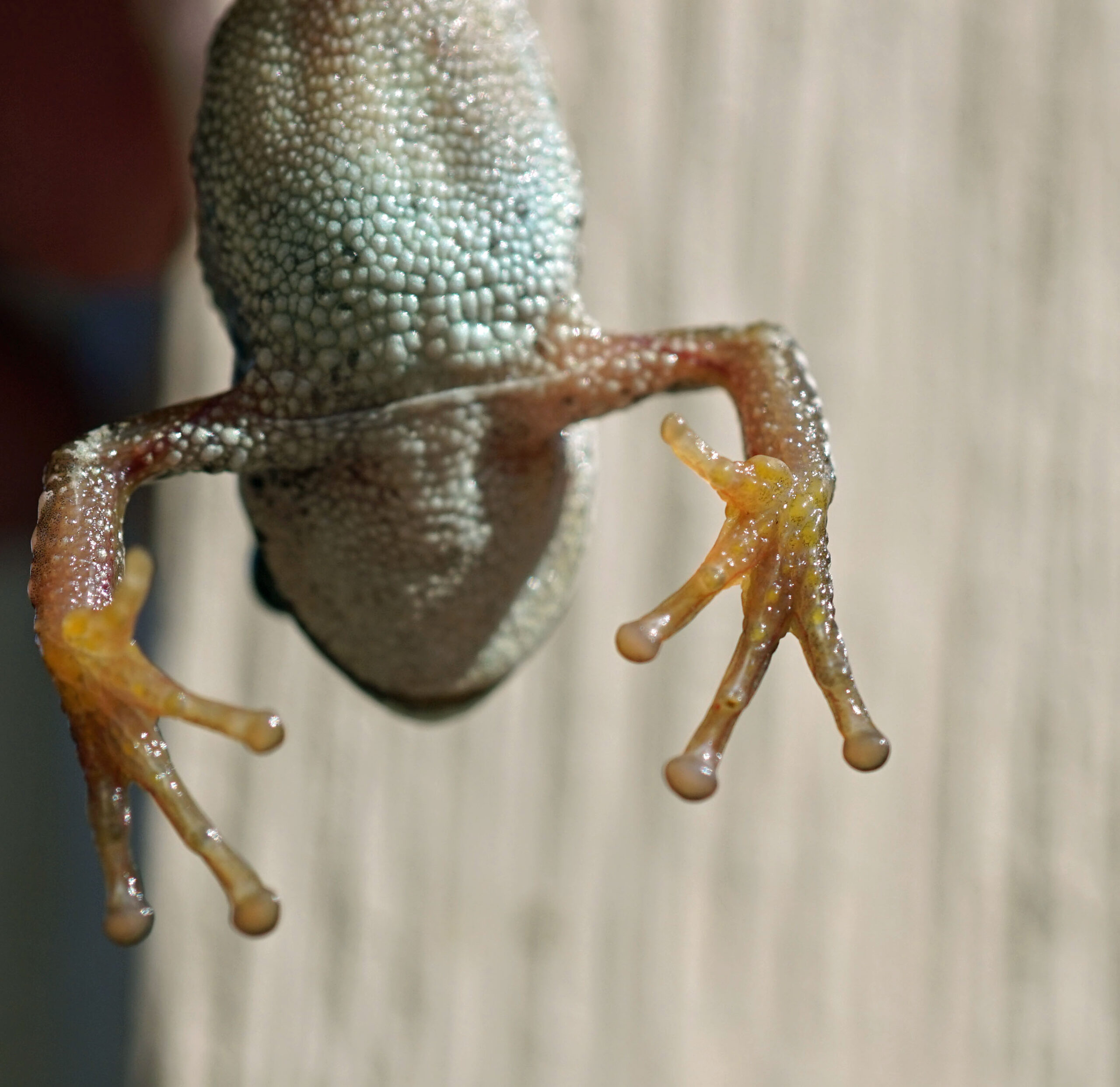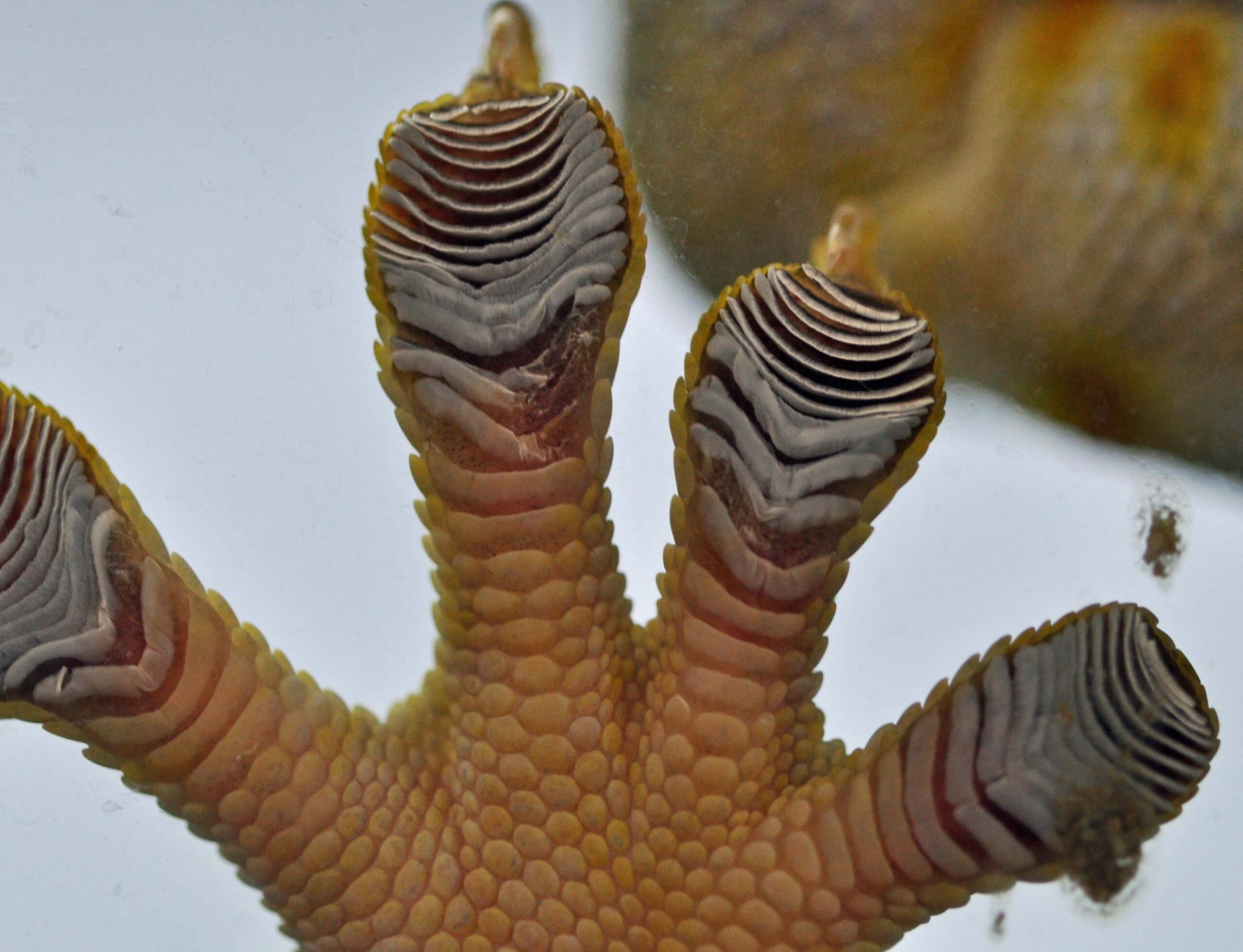Not too long ago I found this pretty Pacific Tree clinging to the wall on the outside of my home. And you see a gecko lizard on the wall inside my room in Saudi Arabia when I was there quite a few years ago. Last week I found another one but was able to catch it and photograph it’s feet. Note that the Geckos also have claws and their toe pad scales are covered with microscopic sized “bristles”. Meanwhile the tree frog toe is composed very differently. Their moisture toe pad pretty much allows it to stick to things.
This is something that has intrigued me for quite a while. I have spent a very long time with all kinds of herps but two species that really got my attention was due to their ability to climb up on things. I’m not referring to things like tree branches and rocks, I’m talking about much more challenging material. In several different countries I saw geckos not only climb up things in nature, but also up walls inside and outside of my room, and glass walls of aquariums. That was very interesting and got me wondering about the design of their toes. Then right back here in Washington state I witnessed a frog that possessed the same climbing ability of gecko lizards! Because of this I set up a goal to use my macro lens camera for pictures to compare gecko toes to Pacific tree frog toes. And I finally got it done. Now I am sure that many people living here in WA and OR have seen, and heard, these Pacific tree frogs on the walls of their home. Yet just like the gecko lizards, I observed them also easily and quickly climbing up the glass walls of an aquarium. Of course, these are probably not the only frog and lizard species capable of something like this. According to the Audubon Society Field Guide there are sixteen other “tree frog” species in North America, and 17 different species of geckos in North America. An interesting thing about our Pacific Tree Frog is that despite their great climbing talent, they usually spend much more time hiding under vegetation closer to the ground. During cool spring weather you will hear them “creaking” away in huge loud numbers and volume, but then in summer they quiet down and seem to disappear. Unpredictably after that, however, they may show up on tree branches or on the side of your house. That is not usually where they spend most of their time, although some do. I suspect that “tree frog” common name was based on its ability, not its normal behavior. Whatever, I love these little frogs.
<
>





Leave a Reply
You must be logged in to post a comment.